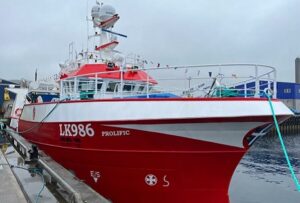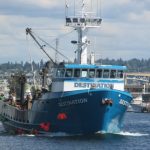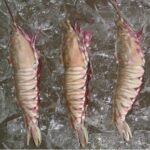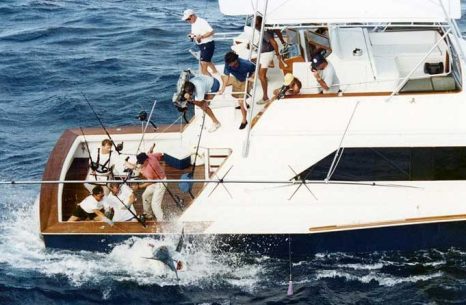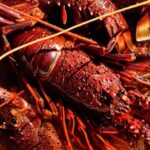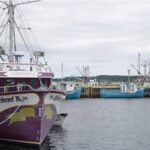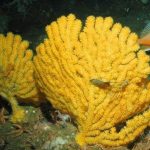Tag Archives: El Niño
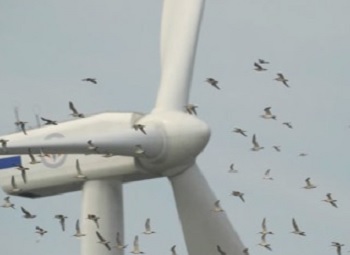
Global Wind Day, Environmental Nightmare
June 15 was Global Wind Day. Its European industry sponsors hope to promote the “power and possibilities” of wind turbines. But beware the Ides of June. Wind turbines have been sold to us as a means of reducing emissions, global warming and climate change. Although there are a lot of wind turbines installed around the world with many more seemingly to come, they have not reduced emissions, warming or climate change. And they offer no chance to do so, even if those things were desirable. Coming eight days short of the 35th anniversary of James Hansen’s Senate testimony that sent the world into global warming panic, it’s clear to anyone who cares to look that emissions have nothing to do with recent warming. >click to read< 08:55
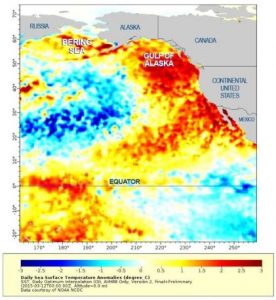
North Pacific Recovering From The Blob, Salmon More Slowly
Ocean conditions off most of the U.S. West Coast are returning roughly to average, after an extreme marine heat wave from about 2014 to 2016 disrupted the California Current Ecosystem and shifted many species beyond their traditional range, according to a new reportfrom NOAA Fisheries’ two marine laboratories on the West Coast. Some warm waters remain off the Pacific Northwest, however. >click to read<07:57
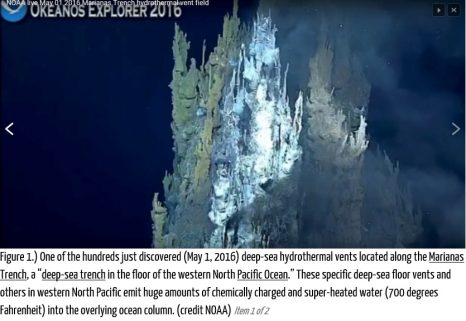
Further proof El Niños are fueled by deep-sea geological heat flow
The 2014-2017 El Niño “warm blob” was likely created, maintained, and partially recharged on two separate occasions by massive pulses of super-heated and chemically charged seawater from deep-sea geological features in the western North Pacific Ocean. This strongly supports the theory all El Niños are naturally occurring and geological in origin. Climate change / global warming had nothing to do with generating, rewarming, intensifying, or increasing the frequency of the 2014-2017 El Niño or any previous El Niño. If proven correct, this would revolutionize climatology and key aspects of many interrelated sciences such as oceanography, marine biology, glaciology, biogeochemistry, and most importantly meteorology. Information supporting a geological origin of El Niños is diverse, reliable, and can be placed into five general categories as follows,,, Read the article here 13:19

El Nino, Pacific Decadal Oscillation implicated in domoic acid shellfish toxicity
Using a combination of time-series data spanning two decades, the scientists not only showed a clear link between domoic acid and these larger climatic phenomena, but also developed a new model to predict with some accuracy the timing of domoic acid risks in the Pacific Northwest. The model is based on interpreting the status of the “Oceanic Niño Index” and the Pacific Decadal Oscillation – both of which are measures of climate, ocean water movement, currents and temperature. It’s designed to help coastal resource managers more effectively monitor this issue and protect public health. The findings were made by researchers from Oregon State University, the University of Oregon, the National Oceanic and Atmospheric Association (NOAA), and the Oregon Department of Fish and Wildlife. The work was primarily supported by NOAA. Read the article here 08:01
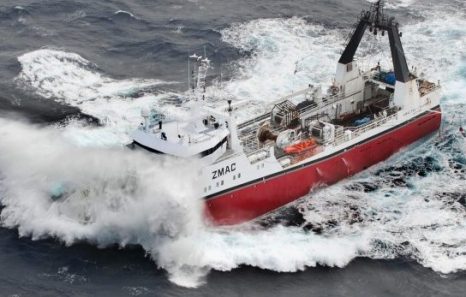
El Nino brings rugged and strange conditions for deep sea fishers
The El Nino weather pattern has made for a strange season of deep sea fishing and some rugged weather conditions for crews to deal with. Talley’s director Andrew Talley said the hoki season had been a good one with plenty of decent sized fish caught. The squid catch had also been good, but the albacore and skipjack tuna seasons had been poor, he said. The changes El Nino brought about in ocean currents, water temperature and feed all affected marine productivity, Talley said. “Ultimately we see that in how these various commercial fisheries perform year to year. The El Nino weather pattern also resulted in stronger than normal winds. The Talley’s owned Amaltal Columbia battled 6 metre swells and 35-45 knot winds when fishing for hoki 150km south of Bluff early this month. A photo of the fishing boat [above] at that time shows the severity of the weather conditions experienced by the 45 crew members working on board the 64 metre long vessel. Read the rest here 08:15
Pelagic red crabs return to Monterey, bad sign for fishermen
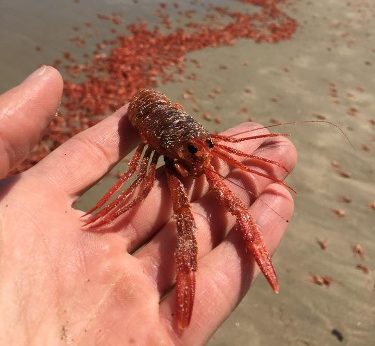 Monday, millions of pelagic red crabs washed ashore on Del Monte Beach in Monterey. A rare sight for beach goers but bad news for fisherman. “When I was a tuna fisherman we used to see them down south, and down south near the equator, down there that’s a good sign to catch tuna, but up here seeing them it’s not such a good sign,” said Gaspar Catanzaro with the Monterey Fish Company. These crabs like warm water and this past El Niño has kept the Monterey Bay warmer than usual. These conditions are preventing nutrient filled water to mix up to the surface And as a result the commercial squid season has been a bust since it opened in April. According to Catanzaro, his 6 boats have had a tough time catching any squid locally. Read the rest here 09:39
Monday, millions of pelagic red crabs washed ashore on Del Monte Beach in Monterey. A rare sight for beach goers but bad news for fisherman. “When I was a tuna fisherman we used to see them down south, and down south near the equator, down there that’s a good sign to catch tuna, but up here seeing them it’s not such a good sign,” said Gaspar Catanzaro with the Monterey Fish Company. These crabs like warm water and this past El Niño has kept the Monterey Bay warmer than usual. These conditions are preventing nutrient filled water to mix up to the surface And as a result the commercial squid season has been a bust since it opened in April. According to Catanzaro, his 6 boats have had a tough time catching any squid locally. Read the rest here 09:39
Monterey Bay squid season a bust
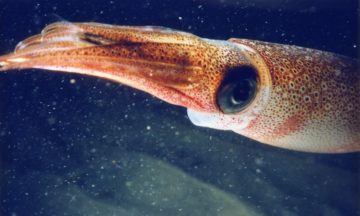 If Monterey had a signature restaurant dish, cioppino and fried calamari would battle it out for the top spot. But the common ingredient in each is squid, those prehistoric looking cephalopods (scientific name loligo) that school in the cool, nutrient-rich waters of Monterey Bay. Then “the boy” arrived. Once El Niño showed up things started to look different in the bay,” said Sal Tringali, president of Monterey Fish Company, who oversees a five-boat fleet that provides local restaurants with most of their fresh seafood, including squid. “There’s no squid,” said Tringali. “No anchovies either. We’ve seen this before during El Niño.” Read the story here 10:37
If Monterey had a signature restaurant dish, cioppino and fried calamari would battle it out for the top spot. But the common ingredient in each is squid, those prehistoric looking cephalopods (scientific name loligo) that school in the cool, nutrient-rich waters of Monterey Bay. Then “the boy” arrived. Once El Niño showed up things started to look different in the bay,” said Sal Tringali, president of Monterey Fish Company, who oversees a five-boat fleet that provides local restaurants with most of their fresh seafood, including squid. “There’s no squid,” said Tringali. “No anchovies either. We’ve seen this before during El Niño.” Read the story here 10:37
UCSC professor explains toxin’s effect on crab
 UC Santa Cruz Professor of Ocean Science Raphael Kudela explained how this unusual phenomenon occurred and what we can expect next year as part of the university’s Science Sunday lecture series. “The duration of the 2015 bloom and the intensity of the toxicity were unprecedented, and that led to record levels of the toxin in species such as anchovies, razor clams, and crabs,” Kudela said. “We also saw the toxin in organisms and parts of organisms where we thought it was not supposed to be, like the filets of fish.” Read the article here 10:25
UC Santa Cruz Professor of Ocean Science Raphael Kudela explained how this unusual phenomenon occurred and what we can expect next year as part of the university’s Science Sunday lecture series. “The duration of the 2015 bloom and the intensity of the toxicity were unprecedented, and that led to record levels of the toxin in species such as anchovies, razor clams, and crabs,” Kudela said. “We also saw the toxin in organisms and parts of organisms where we thought it was not supposed to be, like the filets of fish.” Read the article here 10:25
El Nino and global warming create a surplus of doomsday headlines
 According to a new NOAA report issued December 28, the current status of the El Niño that is driving the much-hyped ‘extreme weather’ may be the third-strongest since 1950. A far cry from being the worst El Niño in history that numerous media outlets are thundering and desperately trying to tie to global warming. Under NOAA’s El Niño Advisory system, they state that warmer-than-normal equatorial sea surface temperatures (SST) will continue across most of the Pacific Ocean and will “transition to normal SST conditions in the spring or early summer 2016.” In fact, NOAA says the current El Niño event we are seeing has already peaked, and it isn’t the monster many mainstream media (MSM) outlets would have you believe. Read the article here 17:44
According to a new NOAA report issued December 28, the current status of the El Niño that is driving the much-hyped ‘extreme weather’ may be the third-strongest since 1950. A far cry from being the worst El Niño in history that numerous media outlets are thundering and desperately trying to tie to global warming. Under NOAA’s El Niño Advisory system, they state that warmer-than-normal equatorial sea surface temperatures (SST) will continue across most of the Pacific Ocean and will “transition to normal SST conditions in the spring or early summer 2016.” In fact, NOAA says the current El Niño event we are seeing has already peaked, and it isn’t the monster many mainstream media (MSM) outlets would have you believe. Read the article here 17:44
El Niño pushes California calamari landings down
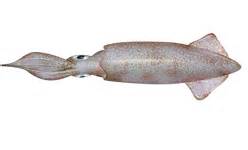 After several years of bounty, California’s commercial landings of market squid — the species better known to hungry diners as calamari — are down by about two-thirds compared to this time last year. The squid are responding to this year’s El Niño conditions, scientists say, but whether their numbers are declining or they’re simply eluding fishermen is unknown, according to California Department of Fish and Wildlife environmental scientist Laura Ryley. Read the article here 15:03
After several years of bounty, California’s commercial landings of market squid — the species better known to hungry diners as calamari — are down by about two-thirds compared to this time last year. The squid are responding to this year’s El Niño conditions, scientists say, but whether their numbers are declining or they’re simply eluding fishermen is unknown, according to California Department of Fish and Wildlife environmental scientist Laura Ryley. Read the article here 15:03
El Nino shaping up nicely

3MMI – El Nino Strikes Again: California Squid Fishery Dries Up
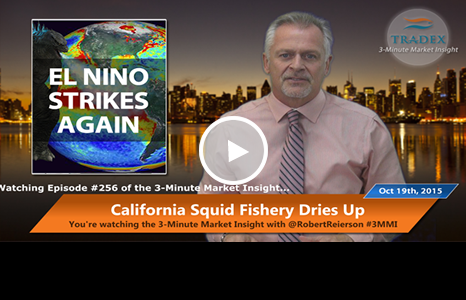 Published on Oct 19, 2015, 3-Minute Market Insight: Pacific Loligo Squid have been dramatically impacted by the warm water effects of El Nino. The Loligo fishery started strong, but as the squid began to move to cooler and deeper waters, many fishermen were out of luck. Watch the Tradex 3-Minute Market Insight here 07:48
Published on Oct 19, 2015, 3-Minute Market Insight: Pacific Loligo Squid have been dramatically impacted by the warm water effects of El Nino. The Loligo fishery started strong, but as the squid began to move to cooler and deeper waters, many fishermen were out of luck. Watch the Tradex 3-Minute Market Insight here 07:48Salmon ‘nightmare’ ahead?
 Oregon and Washington will experience two big El Nino-like events in combination this year, scientists and fishery managers say. This has never happened before and the events could have major impacts on commercial and recreational fisheries — and ocean species from salmon to orcas — for years to come. One of these events is a true El Nino — a big one — and brings with it the likelihood of less precipitation and warmer temperatures in the Pacific Northwest. The other event, the “Blob,” is a warm expanse of water that has persisted off the West Coast for over a year and only resembles El Nino. It is an anomaly, a mystery. Read the rest here 19:59
Oregon and Washington will experience two big El Nino-like events in combination this year, scientists and fishery managers say. This has never happened before and the events could have major impacts on commercial and recreational fisheries — and ocean species from salmon to orcas — for years to come. One of these events is a true El Nino — a big one — and brings with it the likelihood of less precipitation and warmer temperatures in the Pacific Northwest. The other event, the “Blob,” is a warm expanse of water that has persisted off the West Coast for over a year and only resembles El Nino. It is an anomaly, a mystery. Read the rest here 19:59
Peru plans to start its main fishing season a month earlier to lock in anchovy catches in case El Niño intensifies
 An updated official El Niño forecast, scheduled for release on Monday, is expected to paint a clearer picture of potential impacts late this year. The last forecast for a “strong” El Niño said the phenomena might become “extraordinary” in the summer, which starts in December in the southern hemisphere. Ghezzi said his ministry could ease rules on commercial fishing because of El Niño and will likely move the start of the anchovy season to October from November. “We want to put in place adaptive policies for industrial fishing in order to reduce the impacts of El Nino.” Read the rest here 09:02
An updated official El Niño forecast, scheduled for release on Monday, is expected to paint a clearer picture of potential impacts late this year. The last forecast for a “strong” El Niño said the phenomena might become “extraordinary” in the summer, which starts in December in the southern hemisphere. Ghezzi said his ministry could ease rules on commercial fishing because of El Niño and will likely move the start of the anchovy season to October from November. “We want to put in place adaptive policies for industrial fishing in order to reduce the impacts of El Nino.” Read the rest here 09:02
‘Godzilla’ El Nino Is Awakening, and Headed Toward California
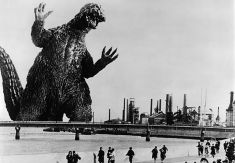 Rising temperatures in the Pacific Ocean continue to reinforce the brewing El Nino “Godzilla” that forecasters said Thursday could rival the strongest on record. According to the latest climate update from the National Oceanic and Atmospheric Administration, there is a 90 percent chance that El Nino will continue through winter as conditions are similar to prior El Nino years that brought massive amounts of rainfall to California. While forecasters are wary to predict the exact impact El Nino could have this fall because of a persistent,,, Read the rest here 10:59
Rising temperatures in the Pacific Ocean continue to reinforce the brewing El Nino “Godzilla” that forecasters said Thursday could rival the strongest on record. According to the latest climate update from the National Oceanic and Atmospheric Administration, there is a 90 percent chance that El Nino will continue through winter as conditions are similar to prior El Nino years that brought massive amounts of rainfall to California. While forecasters are wary to predict the exact impact El Nino could have this fall because of a persistent,,, Read the rest here 10:59
Thousands of tuna crabs invade San Diego’s beaches, El Niño could be the culprit
 Thousands reddish-orange tuna crabs have been washing ashore along San Diego’s beaches. It’s thought the unusual sight is because of warmer-than-normal waters in the Pacific Ocean near the California coast. The tiny crustaceans have appeared from Point Loma to Newport Beach to Santa Catalina Island since early this year but now the crabs have begun to come ashore in San Diego over the past two weeks. Read the rest here 19:55
Thousands reddish-orange tuna crabs have been washing ashore along San Diego’s beaches. It’s thought the unusual sight is because of warmer-than-normal waters in the Pacific Ocean near the California coast. The tiny crustaceans have appeared from Point Loma to Newport Beach to Santa Catalina Island since early this year but now the crabs have begun to come ashore in San Diego over the past two weeks. Read the rest here 19:55
Unusual Fish Catches Off San Diego Signal Large-Scale El Niño, Researcher Says
 Barnett said the ’97-’98 event caused a northward shift of the whole fishery population, drawing an abundance of albacore and Bluefin tuna to San Diego’s unusually warm waters. “We’ve already started to see very unusual fish catches here,” Barnett said. “The first yellowfin tuna was caught in May — that has never happened before to anybody’s recollection.” Read more here 14:17
Barnett said the ’97-’98 event caused a northward shift of the whole fishery population, drawing an abundance of albacore and Bluefin tuna to San Diego’s unusually warm waters. “We’ve already started to see very unusual fish catches here,” Barnett said. “The first yellowfin tuna was caught in May — that has never happened before to anybody’s recollection.” Read more here 14:17
Satellite Observations Show El Nino Coming — And It Could Be The Worst In Decades
Data from ocean-observing satellites and other ocean sensors indicate that El Niño conditions appear to be developing in the equatorial Pacific Ocean. Conditions in May 2014 Read more here 16:07



































